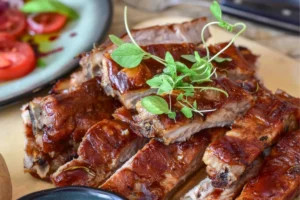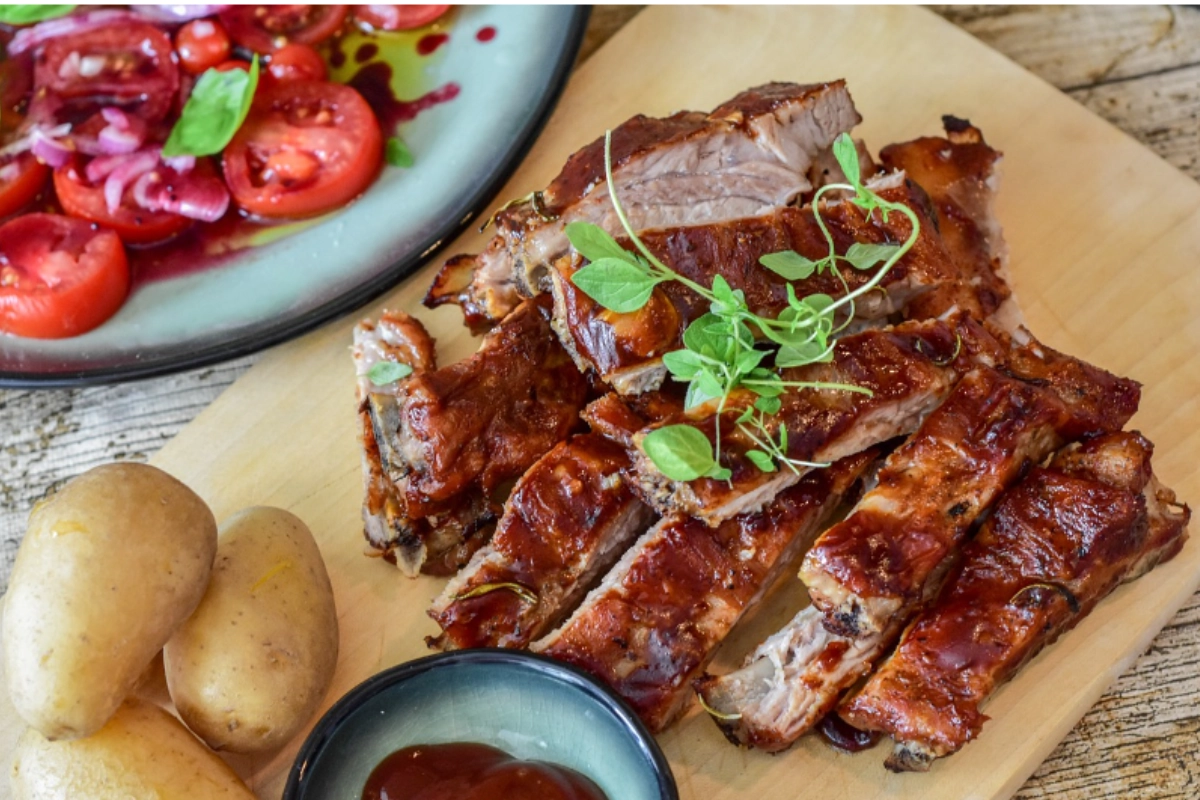Introduction to Pork Rib

Pork rib are a staple in many cuisines around the world, prized for their tender meat and rich flavor. Understanding the basics of pork ribs is essential for anyone looking to explore the world of barbecue and grilling. Let’s take a closer look at what pork ribs are all about.
What Are Pork Ribs?
Pork ribs are cuts of meat taken from the ribcage of pigs. They are typically divided into different sections, each offering its own unique characteristics and flavors. The most common types of pork ribs include baby back ribs, spare ribs, St. Louis style ribs, and country style ribs.
Cultural Significance of Pork Ribs
Pork ribs hold significant cultural importance in many parts of the world. In the United States, barbecue enthusiasts gather annually for cook-offs and festivals dedicated to celebrating the art of smoking and grilling ribs. In Asia, pork ribs are often featured in traditional dishes such as char siu and Korean-style barbecue.
Types of Pork Ribs
When it comes to pork ribs, variety is the spice of life. Each type of rib offers its own unique flavor profile and cooking characteristics, making them suitable for a wide range of culinary applications. Let’s dive into the different types of pork ribs and discover what sets them apart.
Spare Ribs
Derived from the lower portion of the ribcage, spare ribs are larger and fattier than baby back ribs, offering a richer flavor and juicier texture. These ribs are known for their marbling and generous amount of meat, making them a popular choice for barbecue aficionados who prefer a hearty, indulgent meal. Spare ribs are often cooked low and slow to allow the fat to render and the meat to become tender and flavorful.
St. Louis Style Ribs
St. Louis style ribs are spare ribs that have been trimmed down to a more uniform shape, with excess fat and cartilage removed. This results in a cleaner, more rectangular slab of ribs that cooks evenly and presents beautifully on the plate.
Country Style Ribs
Unlike other types of pork ribs, country style ribs are not actually ribs at all. Instead, they are cut from the shoulder end of the ribcage and consist of meaty strips with a small section of bone. Country style ribs are prized for their tenderness and versatility, making them ideal for grilling, braising, or slow cooking. With their robust flavor and juicy meat, country style ribs are sure to satisfy even the heartiest appetites.
Cooking Methods for Pork Ribs

Grilling Pork Ribs
Grilling is perhaps the most popular method for cooking pork rib, offering a perfect balance of smokiness and charred flavor. To grill pork rib, start by seasoning them with your favorite dry rub or marinade, allowing the flavors to penetrate the meat. Then, preheat your grill to medium heat and place the ribs directly over the flames. Cook the ribs for several minutes on each side, brushing them with barbecue sauce if desired, until they are caramelized and charred to perfection. Serve hot off the grill with your favorite sides for a memorable meal.
Smoking Pork Ribs
Smoking is a time-honored technique that infuses pork rib with deep, smoky flavor and tenderizes the meat to melt-in-your-mouth perfection. To smoke pork rib, prepare your smoker according to manufacturer instructions and set it to a low and steady temperature, ideally around 225°F. Place the seasoned ribs on the smoker rack, ensuring they are evenly spaced for optimal airflow. Smoke the ribs for several hours, periodically basting them with a mop sauce or spritz to keep them moist. The ribs are done when they are tender and have developed a beautiful mahogany color. Let them rest before slicing and serving for maximum flavor.
Oven-Baking Pork Rib
Oven-baking is a convenient and foolproof method for cooking pork rib, perfect for those without access to outdoor grills or smokers. To bake pork rib in the oven, preheat your oven to 275°F and line a baking sheet with aluminum foil. Place the seasoned ribs on the foil-lined sheet and cover them tightly with another sheet of foil to create a sealed packet. Bake the ribs for several hours, or until they are tender and cooked through. For extra flavor, finish the ribs under the broiler for a few minutes to caramelize the edges. Serve hot and enjoy the juicy, succulent meat.
Slow Cooking Pork Rib
Slow cooking is a hands-off method that yields incredibly tender and flavorful pork rib with minimal effort. To slow cook pork ribs, place them in a slow cooker and season them with your favorite spices and aromatics. Add a liquid such as broth, cider, or barbecue sauce to keep the ribs moist during cooking. Cook the ribs on low heat for several hours, allowing the meat to become tender and juicy. Once done, transfer the ribs to a serving platter and spoon any remaining sauce over the top. Serve with your favorite sides for a comforting and satisfying meal.
Serving and Pairing Pork Rib
Side Dishes
Choosing the perfect side dishes can enhance the flavors of your pork rib and create a well-rounded meal. Consider classic barbecue sides such as coleslaw, potato salad, baked beans, and cornbread to complement the smoky, savory flavors of the ribs. For a lighter option, opt for a crisp garden salad or grilled vegetables to balance out the richness of the meat. Don’t forget to include plenty of napkins and extra barbecue sauce for dipping and drizzling!
Beverages
Pairing the right beverages with your pork ribs can elevate the dining experience and enhance the overall flavor profile of the meal. While beer is a classic choice for barbecue fare, consider branching out and exploring other options such as iced tea, lemonade, or fruity sodas. For a refreshing and palate-cleansing effect, serve sparkling water or citrus-infused cocktails.
Health Considerations
Nutritional Profile of Pork Rib
Pork ribs are rich in protein and essential nutrients, but they are also high in fat and calories. A 3-ounce serving of pork ribs contains approximately 250 calories, with the majority of calories coming from fat. While pork ribs provide important nutrients such as iron, zinc, and B vitamins, they should be enjoyed in moderation as part of a well-rounded diet. Opting for leaner cuts of pork ribs and trimming excess fat can help reduce calorie and fat intake.
Moderation and Balance
Enjoying pork ribs in moderation is key to maintaining a healthy lifestyle. While it’s perfectly fine to indulge in this delicious dish occasionally, it’s important to balance it with plenty of fruits, vegetables, whole grains, and lean proteins in your diet. Incorporating a variety of nutrient-dense foods into your meals ensures that you’re getting the essential vitamins and minerals your body needs to thrive. Remember to listen to your body’s hunger and fullness cues and practice mindful eating to avoid overindulging.
Frequently Asked Questions (FAQs)
1. What are the three types of pork ribs?
- The three main types of pork ribs are baby back ribs, spare ribs, and St. Louis style ribs. Each type has its own unique characteristics and flavors, making them versatile for various cooking methods and recipes.
2. How long does it take to cook pork ribs?
- The cooking time for pork ribs varies depending on the cooking method and the specific cut of ribs being used. Generally, it can take around 1.5 to 2 hours to grill pork ribs, 4 to 6 hours to smoke them, and 2 to 3 hours to bake them in the oven at a low temperature. It’s essential to monitor the ribs closely to ensure they are cooked to the desired level of tenderness.
3. What’s the difference between short ribs and pork ribs?
- Short ribs typically refer to beef ribs, specifically the ribs cut from the chuck section of the cow. They have a rich, beefy flavor and are often braised or slow-cooked to tenderize the meat. Pork ribs, on the other hand, come from pigs and offer a variety of cuts such as baby back ribs, spare ribs, and St. Louis style ribs. Pork ribs have a slightly sweeter flavor compared to beef short ribs.
4. Do you cook pork ribs fast or slow?
- Pork ribs are best cooked slowly to allow the fat to render and the meat to become tender and flavorful. While there are faster cooking methods such as grilling, slow cooking methods like smoking or braising are often preferred to achieve the best results in terms of texture and flavor. Slow cooking allows the ribs to absorb the flavors of any rubs, marinades, or sauces used, resulting in a more delicious and succulent end product.
FOR MORE RECIPES CLICK HER

